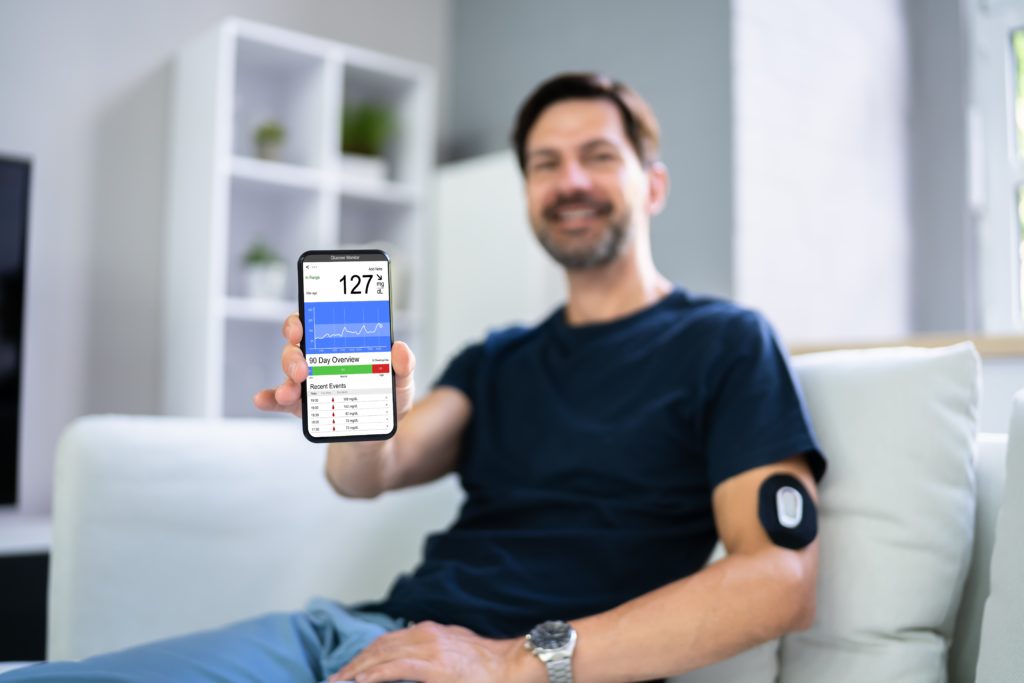Type 2 Diabetes is a chronic condition that affects over 400 million individuals worldwide, and can lead to major health issues if not properly managed. In recent years there have been significant advances in the treatments available for people with diabetes. Thanks to new technologies, such as telehealth, outcomes for patients living with the disease are improving from year to year. In this blog, we will highlight the importance of managing type 2 diabetes, and how telehealth is improving the ways patients manage their condition.
The Importance of Managing Type 2 Diabetes
For patients with type 2 diabetes, blood sugar management is critical for avoiding or delaying the development of health-related problems. According to the American Diabetes Association, individuals with type 2 diabetes are more likely to develop cardiovascular illness, kidney disease, nerve damage, and other health problems. To avoid these complications, it is critical to control the disease by adopting a healthy lifestyle and taking medication as directed.
How Telehealth is Improving Care for Type 2 Diabetes
Telehealth is a fast-growing care delivery method that uses technology to provide healthcare services remotely. It allows patients to obtain care from providers who are not physically present, which increases access to both regular, and urgent care. There are many potential applications for telehealth, including mental health counseling, physical therapy, and disease management. Telehealth can also be used for preventive care, such as health screenings for pre-diabetes diabetes, and educational resources for patients who may be at risk for developing diabetes.
Telehealth platforms offer a range of features including options for patients to log their blood sugar levels, remote patient management tools for healthcare providers, and additional patient resources. Each of these features has its own unique benefits that can improve patient care. For example, when patients keep track of their daily blood sugar levels, they can recognize what patterns and habits contribute to healthy readings. The remote patient management tools help providers proactively manage the patient’s health without the need for frequent in-person healthcare visits
Enhanced Patient Engagement

Telehealth increases accessibility to healthcare services and enhances patient engagement throughout the care process by providing continuous monitoring. Better access to care is achieved by providing a virtual communication platform for healthcare providers and patients to connect virtually at any time. This is especially beneficial for patients living in rural areas where access to quality care is limited. In addition, telehealth can improve patient engagement by providing a convenient way for patients to receive education and support services. It can also provide constant monitoring to keep diabetes under control and prevent complications.
With telehealth, patients with type 2 diabetes can get check-ups and questions answered in the comfort of their homes. Patients can track their blood sugar levels at home using monitoring devices such as blood sugar meters, diabetic test strips, or insulin pumps. Although quarterly and semi-annual testing may still necessitate in-person visits, many other symptoms of diabetes management may be handled virtually.
Daily Self-Management With Telehealth

It can be difficult for diabetic patients to self-manage and reach their goals if they are not regularly guided by a healthcare professional. Patients may have difficulty monitoring blood sugar levels, injecting insulin correctly, and recognizing changes in their condition due to a lack of training. Therefore, regular medical attention from a healthcare specialist or accredited diabetes educator is required to maintain and improve their health.
Patients can use telehealth platforms to access daily self-management tools such as checklists to ensure they are getting the right amount of exercise, eating the right diet, and taking medications on time. They can also collaborate directly with various members of their care team through these platforms, including their primary care provider, diabetes educators, or other specialists. Individuals who are provided with the tools they need to improve their self-management will be more likely to adhere to their routines and avoid the negative effects of diabetes over time.
Utilizing Telehealth To Manage Type 2 Diabetes
Many different telehealth platforms can be used to help manage type 2 diabetes. These platforms can be used to track blood sugar levels, monitor medication adherence, and provide education and support. Some telehealth platforms, such as aTouchAway also offer additional features, such as the ability to schedule appointments and send reminders. It is important that all healthcare providers choose the right telehealth platform that best fits their patients’ needs.
Thank you for reading. To stay up to date on current healthcare topics and news about Aetonix, subscribe to our mailing list at the bottom of our blog page. Connect with us on social media using the links at the bottom of this page and share your thoughts!



